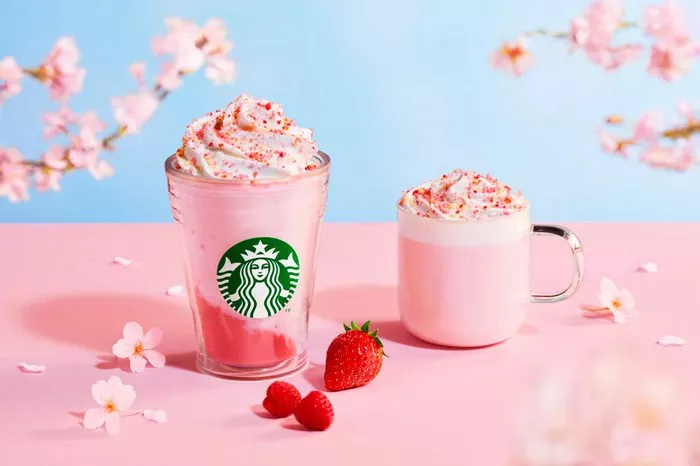Starbucks is renowned for its extensive menu of coffee beverages, including a variety of flavored syrups that enhance the taste and aroma of their drinks. For health-conscious customers or those monitoring their sugar intake, Starbucks offers sugar-free syrups. This article delves into the sweeteners used in Starbucks sugar-free syrup, exploring their composition, benefits, and potential effects on health.
1. Introduction to Sugar-Free Syrups
Sugar-free syrups have gained popularity in recent years as more consumers seek healthier alternatives to traditional sweeteners. Starbucks offers a range of sugar-free syrups, including Vanilla, Hazelnut, and Caramel, that allow customers to enjoy flavorful beverages without the added calories and sugar. Understanding the sweeteners used in these syrups is crucial for those looking to maintain a balanced diet.
2. The Sweeteners in Starbucks Sugar-Free Syrup
The primary sweetener used in Starbucks sugar-free syrup is sucralose. Sucralose is a chlorinated derivative of sucrose (table sugar) and is approximately 600 times sweeter than sugar. Its intense sweetness allows for minimal use, making it an ideal choice for sugar-free products.
What is Sucralose?
Sucralose is a non-caloric artificial sweetener that has been approved for use in food and beverages by regulatory bodies worldwide, including the U.S. Food and Drug Administration (FDA). It is created through a process that selectively replaces three hydroxyl groups on the sugar molecule with chlorine atoms, resulting in a substance that the body does not metabolize for energy. This means that sucralose passes through the digestive system without contributing calories.
Additional Ingredients
In addition to sucralose, Starbucks sugar-free syrups may contain other ingredients such as water, natural and artificial flavors, citric acid, and preservatives. These components contribute to the overall flavor profile and shelf stability of the syrups.
3. Benefits of Sucralose
Sucralose offers several benefits that make it a popular choice for sugar-free products:
Calorie Control
Since sucralose contains no calories, it is an excellent option for individuals looking to reduce their caloric intake. This makes it particularly appealing for those managing their weight or following specific dietary plans.
Dental Health
Unlike sugar, sucralose does not contribute to tooth decay. Many people opt for sugar-free alternatives to reduce the risk of cavities and maintain dental health.
Versatility in Cooking and Baking
Sucralose is heat-stable, meaning it retains its sweetness even when exposed to high temperatures. This makes it suitable for a variety of culinary applications, from baking to cooking, enabling individuals to enjoy sweet flavors without the added sugar.
4. Considerations and Potential Concerns
While sucralose is considered safe for most individuals, there are some considerations to keep in mind:
Sensitivity to Artificial Sweeteners
Some people may experience gastrointestinal discomfort when consuming sucralose or other artificial sweeteners. Symptoms can include bloating, gas, and diarrhea. It is essential to monitor personal tolerance and adjust consumption accordingly.
Long-Term Health Effects
Research on the long-term effects of sucralose consumption is still ongoing. While studies suggest that it is safe for regular use, some experts advocate for moderation, particularly among individuals who consume a significant amount of artificially sweetened products.
Impact on Taste Preferences
Regular consumption of highly sweetened products may alter taste preferences over time. Individuals may find it challenging to enjoy less sweet foods, potentially leading to a cycle of increasing sweetener consumption.
5. Comparing Sugar-Free Syrups
Starbucks is not the only brand that offers sugar-free syrups; many other coffee shops and manufacturers provide similar products. A comparison of different sugar-free syrups can help consumers make informed choices:
Other Sweeteners Used
Other brands may use sweeteners like aspartame or erythritol in their sugar-free syrups. Aspartame is another non-caloric sweetener, while erythritol is a sugar alcohol that contains fewer calories than sugar and is often better tolerated by those sensitive to artificial sweeteners.
Flavor Profiles
The flavor profiles of sugar-free syrups can vary significantly depending on the sweetener used. Some consumers prefer the taste of sucralose, while others may find alternatives like erythritol or stevia more appealing.
6. Practical Applications of Starbucks Sugar-Free Syrup
Understanding how to incorporate Starbucks sugar-free syrups into beverages can enhance the coffee-drinking experience. Here are some practical applications:
Flavoring Beverages
Starbucks sugar-free syrups can be added to various beverages, including coffee, iced tea, and smoothies. The syrups provide a burst of flavor without the added sugar, making them a great choice for customization.
Creating Low-Calorie Drinks
By substituting traditional sweeteners with sugar-free syrup, customers can create low-calorie versions of their favorite drinks. For example, a sugar-free vanilla latte or a hazelnut iced coffee can satisfy sweet cravings without derailing a healthy diet.
Experimenting with Flavor Combinations
Starbucks offers a variety of sugar-free flavors, allowing customers to experiment with different combinations. Mixing vanilla and caramel syrups can create a delightful new drink that satisfies various taste preferences.
See Also: Can You Get Refills at Starbucks?
7. Conclusion
Starbucks sugar-free syrups provide an excellent alternative for those looking to enjoy sweet flavors without the added sugar. The primary sweetener, sucralose, offers several benefits, including calorie control and dental health advantages. However, it is essential for consumers to consider individual sensitivities and the potential long-term effects of artificial sweeteners.
As the demand for healthier options continues to rise, understanding the ingredients and implications of sugar-free products becomes increasingly important. With knowledge and awareness, consumers can make informed choices that align with their dietary goals and preferences.
Related Topics
Why Starbucks Logo is Mermaid: A Deep Dive into the Siren Symbolism
How Many Calories Are in a Peppermint Mocha Frappuccino from Starbucks?
What is a Starbucks Reserve Store?


